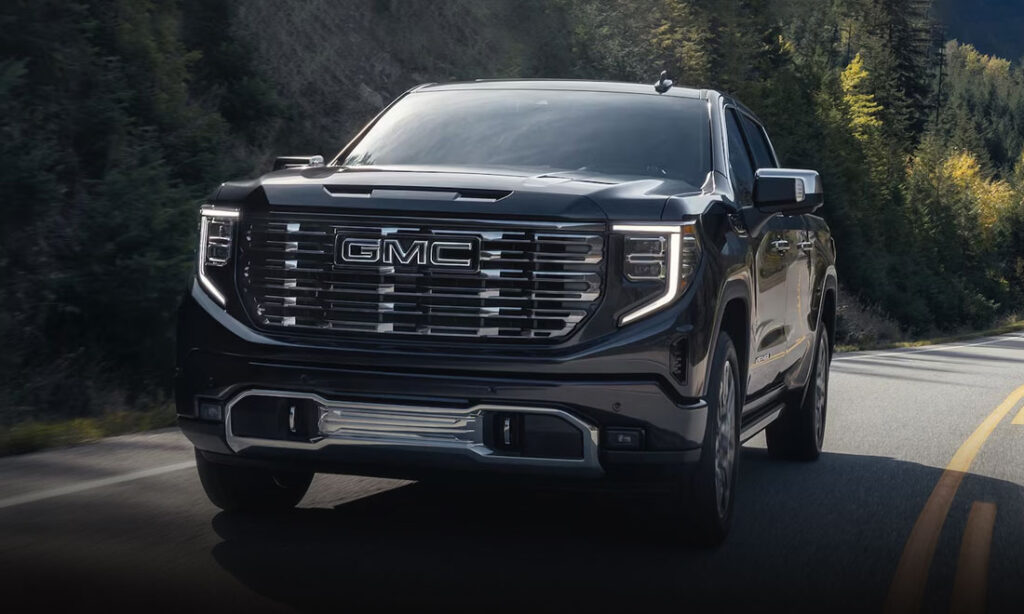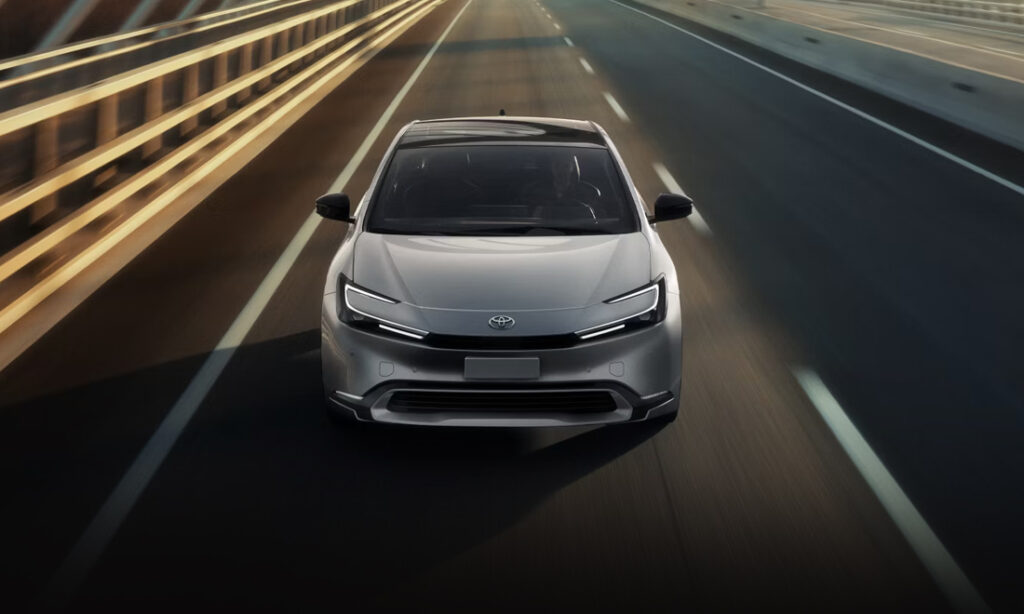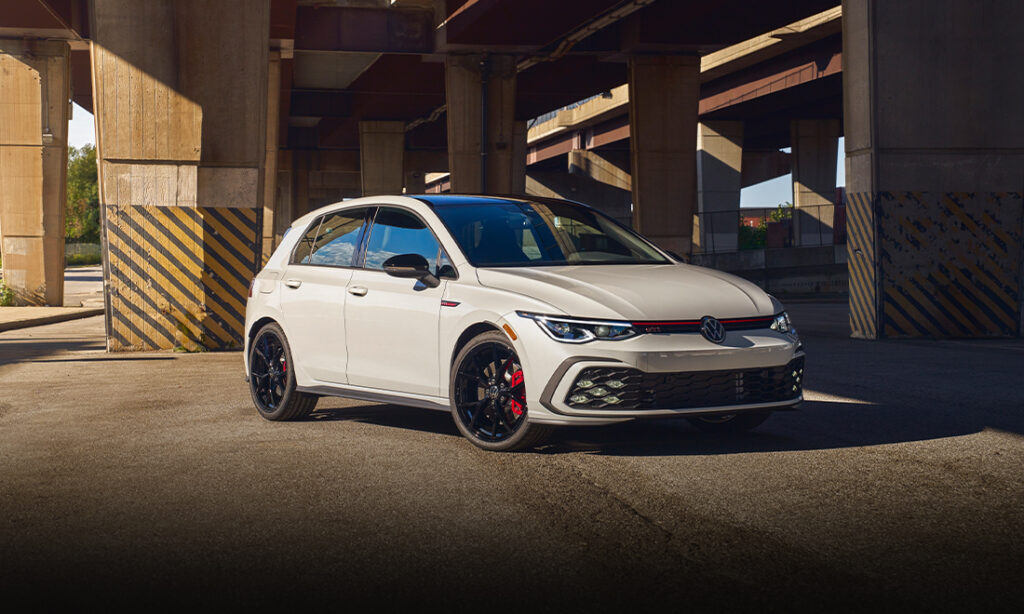Best Chevrolets Ever
Chevrolet has a storied history full of incredible cars. It wasn’t easy, but we narrowed down a list of the most impactful, memorable, and beloved.
Put a Bow (Tie) On It
General Motors has long been a grab bag of car brands. Go back to the early 20th century and you’ll find names like Viking, Scripps-Booth, and Oakland under their umbrella. And while these and other names came and went, Chevrolet has been a mainstay going back to its founding in 1911. The venerable Chevy marque long served as GM’s entry-level brand. But over the years, the bowtie became associated with some of GM’s greatest cars and greatest commercial successes. From generations of pickup trucks and the long-running Suburban to ‘50s chrome classics to the one-and-only Corvette, Chevy has been minting incredible cars for decades. Here’s our picks for the best Chevys of all time.
1947-55 Chevy Advanced Design
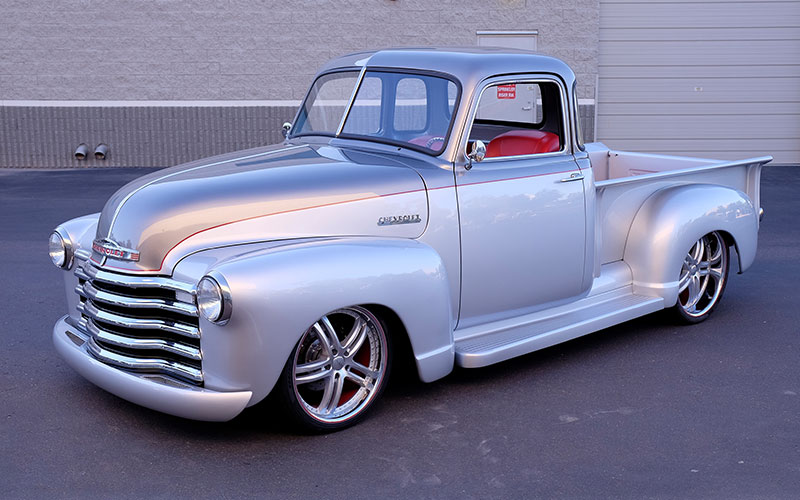
Chevy pickups have earned the admiration of generations of truck owners. We could have chosen the modern Silverado, the C/K Series trucks, or even the Task Force generation of the late 1950s. But the most pivotal of Chevy trucks is the “Advanced Design” pickup of the late 1940s and early ‘50s. The Advanced Design trucks were a major step forward in quality compared to pre-war Chevy trucks. Greater visibility, a heater (!), glove box, and a Thriftmaster straight-six under the hood greatly improved performance and livability. For more on the Advanced Design pickup, click here.
1957 Chevy Bel Air
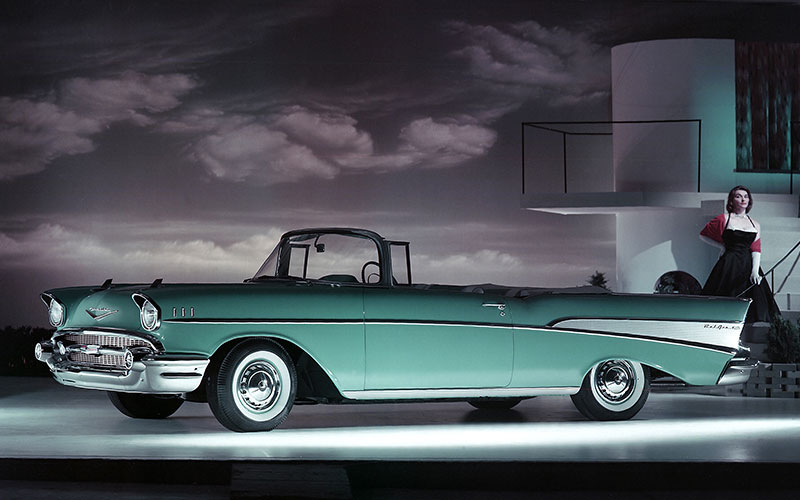
The pinnacle of the “Tri-Five” Chevys, the Bel Air was the brand’s top model for 1957. Today, the ’57 Bel Air is seen as one of the decade’s most iconic cars, an unparalleled paragon of the chrome and fins era. Among its signature features: its headlamp overhangs, the wide and elaborate chrome grille with rubber Dagmars, chrome body trim, and big Jet-Age fins in back. In addition to the Blueflame straight six and 265 V8s, the Bel Air’s premier engine was the 283 V8, that when ordered with optional fuel injection, could make up to 283 horsepower. Iconic looks and Chevy’s first ever V8 to make horsepower equivalent to its displacement make the ’57 Bel Air among the greatest Chevy’s of all time.
1958-61 Chevy Nomad

Chevy had a longstanding habit of giving the station wagon variant of its cars a separate nameplate. There was the Brookwood for the Biscayne and the Yeoman for the Delray and then there was the Nomad for the top trim Bel Air. The second generation debuted in 1958 and with the introduction of the new Impala a year later, the Nomad got a new top-of-the-line counterpart as well as new styling. The Kingswood variant of the Nomad offered seating for up to nine passengers. The Nomad was dropped after 1961 but saw a brief revival as the wagon version of the Chevelle in the late ‘60s. For more on Chevy wagons, click here.
1959 Chevy El Camino

The El Camino isn’t the first American ute, that title goes to the Ford Ranchero. And yet, it’s the Chevy version that has become so indelible and distinctive in our collective imaginations. The El Camino is among the most visually mercurial of all cars, shapeshifting year-over-year throughout the 1970s and ‘80s. However, its first year, the 1959 model, got the privilege of wearing the broad wings and cat-eye taillights shared across Chevy cars that year (including the above Nomad). Yes, the Impala et al also got the same rear end design but combining it with the new truck bed ute design meant the El Camino undoubtedly wore the ’59 Chevy look the best among the entire year’s lineup. For more on the ’59 El Camino, check this out.
1960-66 Chevy Suburban
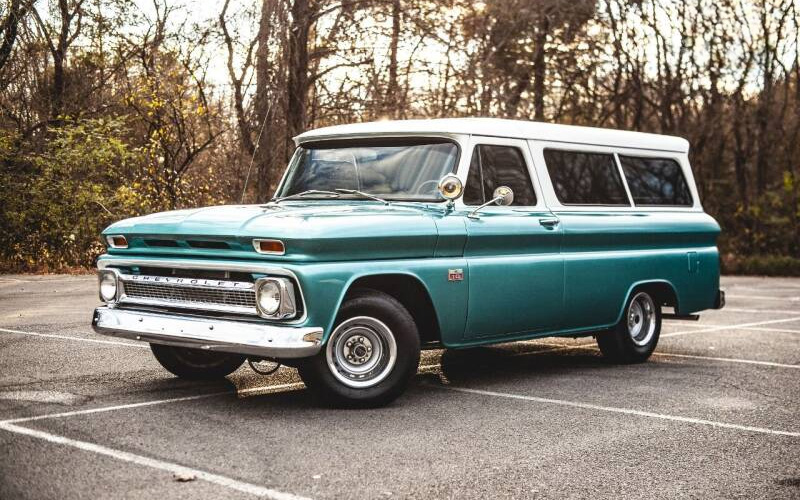
The Chevy Suburban is among the longest running nameplates in American automotive history, dating all the way back to 1933. The Suburban was the proto-SUV, developed from depot hacks/station wagons of yesteryear and slowly, steadily evolving into the hulking SUV we know today. Along that evolutionary line sits the fifth-generation Suburban, our pick to represent Chevy’s first generation of C/K truck designs, beginning in the 1960s. The 1960s Suburban made its bones on sheer size (a full 199 inches in length) and beefy V8s like the 327 debuting in the final ’66 model year. This generation retained some of its carryall heritage, like the fact that, despite its size, it still had only two doors. The next generation, oddly, had three doors, one on the driver’s side and two on the passengers’ side. It took until 1973 for the Suburban to finally get a full four doors.
1963-67 C2 Chevy Corvette
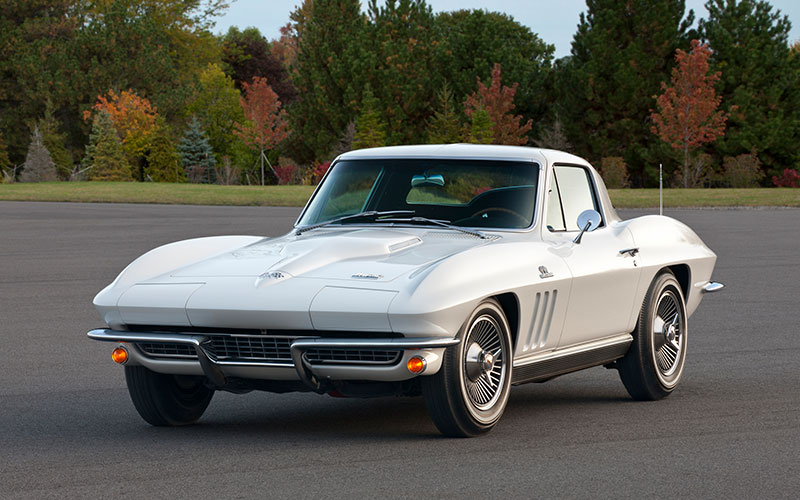
We all know the Corvette first debuted in 1953…right? Yes, and perhaps no. While the Harley Earl-designed American sports car did indeed begin in ’53, the Corvette didn’t really come into its own until its pivotal second generation. The C2 Corvette was a radical departure from what came before. Sure, the 327 V8s carried over from the prior gen, but nearly everything else was overhauled by Chevy’s designers and engineering team. Through his efforts with the C2, Lead Engineer Zora Arkus-Duntov became known in automotive history as the Father of the Corvette. Duntov had advocated for the C1 to get its V8, likely saving the car from cancellation. For the C2, Duntov dreamt even bigger.
The C2 Corvette’s aerodynamics were wind tunnel tested, the car was lighter than the previous generation, and the C2 graduated to larger 396 and then 427 cu.-in. V8 engines. The sleek design of the Stingray Corvette, penned by Larry Shinoda, has become the stuff of automotive legend. The split rear window of the ’63 cars is a highly sought-after marker of rarity for today’s collectors, a feature Duntov disliked and successfully lobbied to cancel. And while the C1 had seen success on the racing circuits, it was the new engineering done for the C2 that brought the car to new heights in competition. The most renowned performance variants include the L88 track cars and the ultra-rare Grand Sport. For more on the C2 Corvette, click here.
1964 Chevy Impala
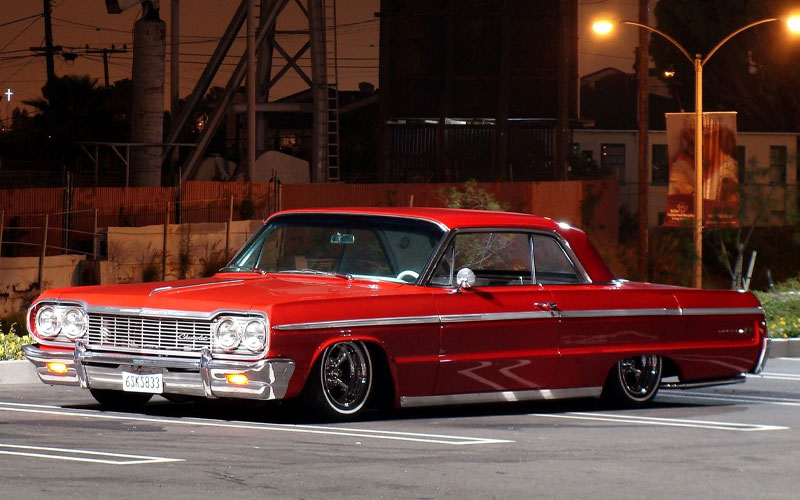
Born of the Bel-Air, the Impala was introduced as the new top-of-the-line Chevy in 1958. By its third generation, designers were jettisoning the curves, sweeps, and bulges of the 1950s for bold, straight lines in the 1960s, resulting in rectilinear slabs like the third-gen Impala. The Impala reached its finest form in the final year of that third generation in 1964. With an optional big-block 409 V8, distinctive grille, and signature triple taillights, the ’64 Impala became an icon within the lowrider community, the long and regal body providing the perfect profile for riding low and slow.
1968 Chevy Camaro

There are plenty of Chevy muscle cars we could have chosen here. The Chevelle or Nova would have represented Chevy’s efforts just fine, but for our money, there really is no matching the 1968 Chevy Camaro for that ineffable combination of street tough looks and straight–line speed. The SS trim got you access to the 396 V8 making 350 horsepower. The Z/28, the “street-going Trans Am car,” ran the smaller yet still potent 302 V8 with an official 290 horsepower, though that’s likely an underrating by Chevy. The Z/28 version added high performance goodies like an upgraded suspension, dual exhaust, and 15-inch rally wheels.
1973-91 Chevy K5 Blazer
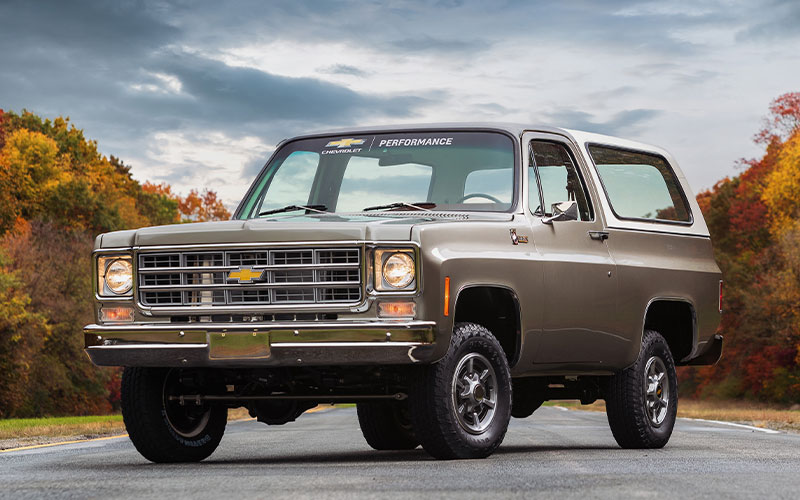
The second-gen Chevy K5 Blazer (1973-91) is beloved for its mix of evocative ‘70s styling and old school ruggedness. The Blazer was created to compete with the Bronco and International Harvester Scout which evolved the classic Jeep off-roader into something more livable day-to-day. The second-gen K5 Blazer offered a mix of engine options that included straight-sixes, small-block V8s, and even diesels. The Blazer’s two-tone paint and squared off front end design pair perfectly with SUV’s stocky proportions, making it our favorite among Chevy’s “Rounded Line” of ‘70s and ‘80s trucks and SUVs.
2020-Present C8 Chevy Corvette
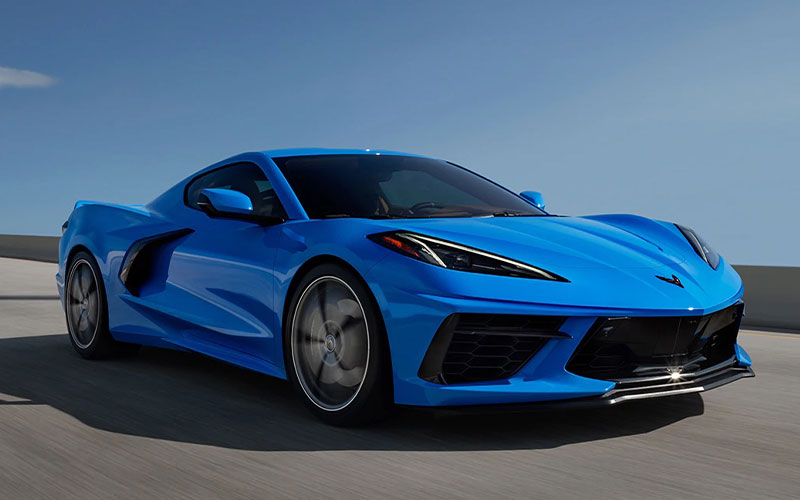
Zora Arkus-Duntov had wanted to make the Corvette a mid-engine car since the days of the C2. It took nearly sixty years, but in 2020 the Corvette finally got its engine moved midship. Now well into its fourth year, the current C8-gen Corvette offers a potent base motor, the LT2 a 6.2L naturally-aspirated V8 making 490 horsepower for either the Stingray or E-Ray hybrid versions. The Z06 variant runs the LT6 a 5.5L V8 making 670 horsepower, currently the most powerful naturally-aspirated engine in production today. In addition to the mechanical updates, the C8 got a thorough makeover, re-envisioning the car as an American exotic with an ultra-low profile, aggressive styling, and a driver-focused cockpit. Add a zero to sixty time of 2.5 second (for the E-Ray) and you have one of the greatest Chevy’s ever built. Check out our review of the 2024 Chevrolet Corvette here.


